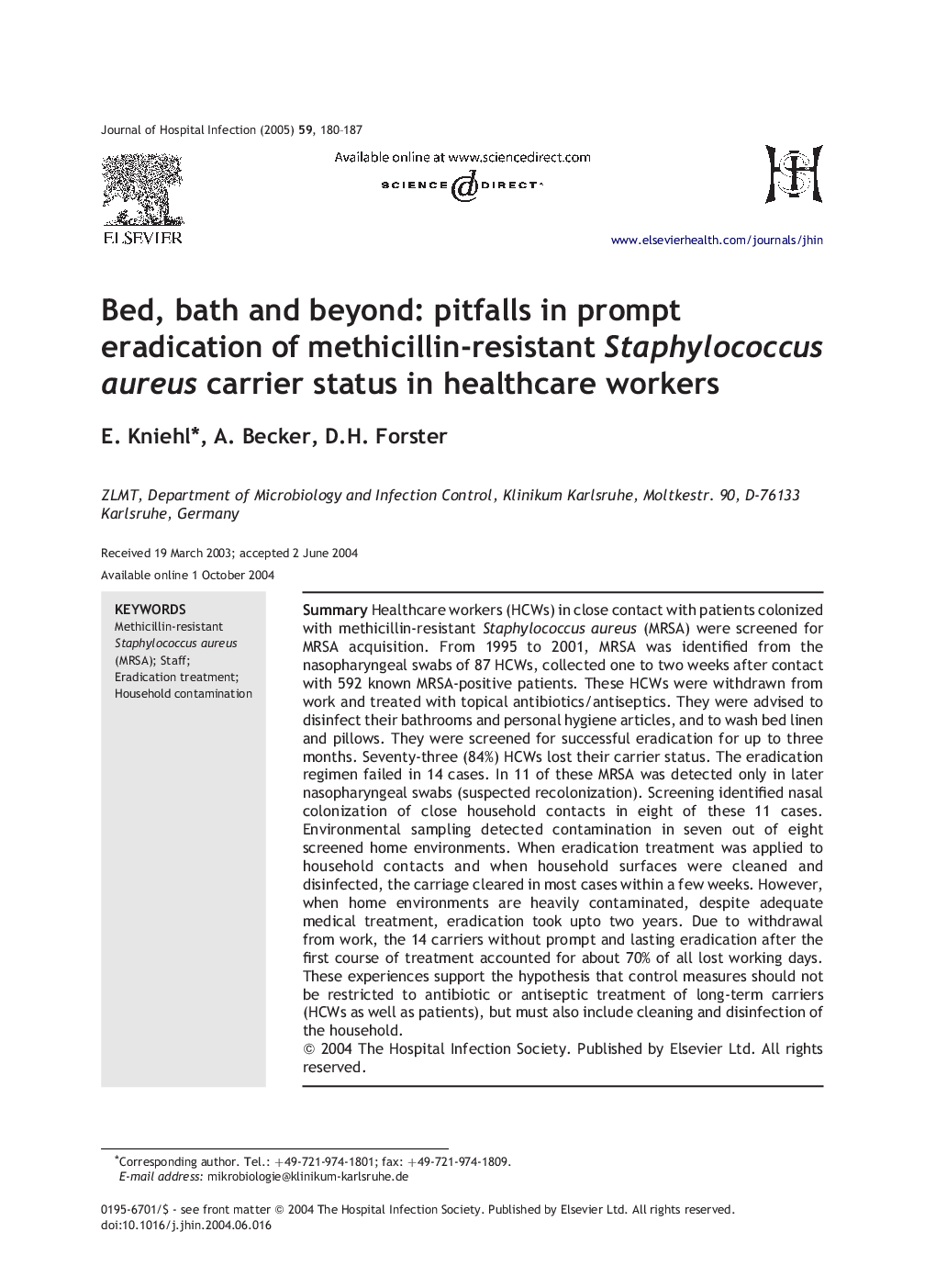| Article ID | Journal | Published Year | Pages | File Type |
|---|---|---|---|---|
| 9269398 | Journal of Hospital Infection | 2005 | 8 Pages |
Abstract
Healthcare workers (HCWs) in close contact with patients colonized with methicillin-resistant Staphylococcus aureus (MRSA) were screened for MRSA acquisition. From 1995 to 2001, MRSA was identified from the nasopharyngeal swabs of 87 HCWs, collected one to two weeks after contact with 592 known MRSA-positive patients. These HCWs were withdrawn from work and treated with topical antibiotics/antiseptics. They were advised to disinfect their bathrooms and personal hygiene articles, and to wash bed linen and pillows. They were screened for successful eradication for up to three months. Seventy-three (84%) HCWs lost their carrier status. The eradication regimen failed in 14 cases. In 11 of these MRSA was detected only in later nasopharyngeal swabs (suspected recolonization). Screening identified nasal colonization of close household contacts in eight of these 11 cases. Environmental sampling detected contamination in seven out of eight screened home environments. When eradication treatment was applied to household contacts and when household surfaces were cleaned and disinfected, the carriage cleared in most cases within a few weeks. However, when home environments are heavily contaminated, despite adequate medical treatment, eradication took upto two years. Due to withdrawal from work, the 14 carriers without prompt and lasting eradication after the first course of treatment accounted for about 70% of all lost working days. These experiences support the hypothesis that control measures should not be restricted to antibiotic or antiseptic treatment of long-term carriers (HCWs as well as patients), but must also include cleaning and disinfection of the household.
Related Topics
Life Sciences
Immunology and Microbiology
Applied Microbiology and Biotechnology
Authors
E. Kniehl, A. Becker, D.H. Forster,
